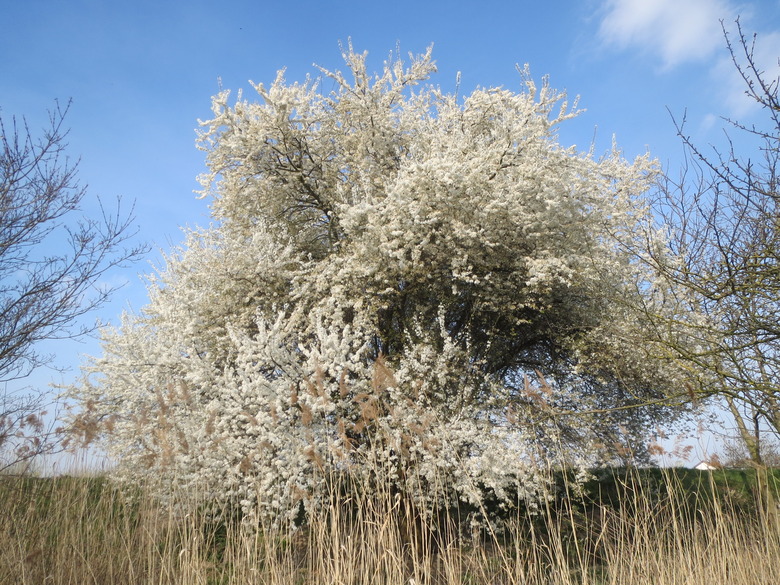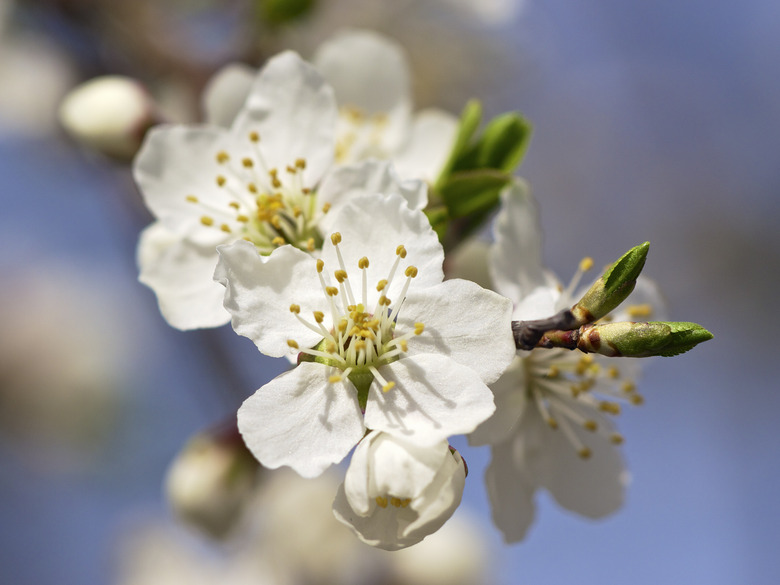Purple Leaf Plum Tree: Identification, Lifespan And Care Guide
Native to western Asia, where it now rarely exists outside of cultivation, the purple leaf plum tree (Prunus cerasifera) is a stone fruit tree that has become naturalized in parts of the U.S., including the Northeast and West.
Also known as the cherry plum, the purple leaf plum tree is considered a short-lived tree with a typical lifespan of about 20 years in many cases. This tree is winter hardy in USDA plant hardiness zones 5 to 8.
Purple Leaf Plum Identification
The plum leaf tree is a medium-size tree, with a full-size tree typically having a height between 15 and 30 feet. In the spring, this species produces showy white flowers that are about an inch across and stand out with their multiple stamens. The flowers are fragrant. The leaves of the species plant are dark green.
While species purple leaf plum trees are not typically grown as ornamentals, several cultivars owe their popularity in home gardens to being purple-leaved trees, including Krauter Vesuvius (Prunus cerasifera 'Krauter Vesuvius,' zones 5 to 8); Newport (Prunus cerasifera 'Newport,' zones 4 to 8); Atropurpurea (Prunus cerasifera 'Atropurpurea,' zones 5 to 9), known as the Pissard plum; and Thundercloud (Prunus cerasifera 'Thundercloud,' zones 5 to 8). There are also dwarf varieties with a height between 10 and 12 feet.
While these trees bear fruit that are edible and enjoyed by birds and wildlife, they are usually grown for their attractive blooms and foliage. The purple color persists into fall.
Purple Leaf Plum Lifespan
The species purple leaf plum tree is capable of living between 60 and 80 years with exceptional care. In most cases, however, the more popular cultivars are short-lived trees with a life span of about 20 years.
Tip
Most purple leaf plum tree cultivars live around 20 years.
Decline of purple leaf plums usually begins when the trees are between 10 and 15 years old.
Purple Leaf Plum Care
Purple leaf plum trees can grow in full sun or part shade, but the best flowering and purple leaf color will occur in full sun. While purple leaf plum trees prefer loamy soils that drain well, they can handle a wide range of soil types, including various pH levels.
The short lifespan of these trees is due in part to wood that breaks easily as well as their structure. Therefore, pruning young trees to help them develop a strong structure is important to their survival. When shopping for new trees, look for specimens with strong center trunks, or leaders.
Fruit litter can often be a problem with purple leaf plum trees.
Tip
Brittle wood often contributes to the short lifespan of purple leaf plum trees.
Purple Leaf Plum Problems
Plum leaf trees and other plum tree varieties are susceptible to a number of diseases and pest infestations that can affect the tree's life expectancy. Plum leaf trees are prone to root rot and black knot, both of which are fungal diseases. Leaf diseases of these trees include powdery mildew and leaf spot.
These trees may also suffer from borer infestations. Borers are the immature larvae of beetles and moths, which drill holes in a tree's trunk. Aphids, scale, leafhoppers and caterpillars are also pests of purple leaf plum trees.
References
- North Carolina State Extension: Prunus cerasifera 'Thundercloud'
- North Carolina State Extension: Prunus cerasifera 'Atropurpurea'
- Sierra Vista Growers: Purple Leaf Plum
- North Carolina State Extension: Prunus cerasifera
- Missouri Botanical Garden: Prunus cerasifera
- Missouri Botanical Garden: Prunus cerasifera 'Krauter Vesuvius'
- Missouri Botanical Garden: Prunus cerasifera 'Newport'
- Missouri Botanical Garden: Prunus cerasifera 'Thundercloud'
- University of Florida IFAS Exentension: Prunus cerasifera 'Atropurpurea': Pissard Plum
- PennState Extension: Plum Disease – Black Knot

